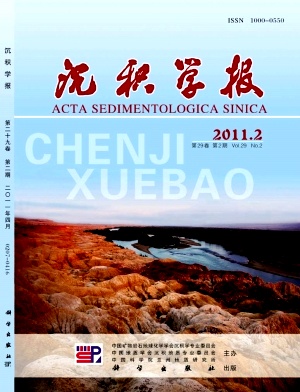Study on Environmental Proxies of the Marine CretaceousPaleogene Boundary from Wuqia Area in the Northwestern Tarim Basin
- Received Date: 1900-01-01
- Rev Recd Date: 1900-01-01
- Publish Date: 2011-04-10
-
Key words:
- CretaceousPaleogene boundary /
- color /
- calcium carbonate /
- organic carbon /
- carbon and oxygen stable isotope /
- Tarim Basin /
Abstract: The catastrophe and extinctions occurred in late Cretaceous is one of the most severe events during the geological history, a thin clay boundary worldwide deposited on the earth during this period was called "KT boundary". The nerth western Tarim Basin is an ideal experimental field preserving continuous Late CretaceousPaleogene marine stratum and excellent outcrops in China. Previous researchers have done a lot of work and made a series of important achievements, however, the research and discussion on the paleoenvrionment and paleoclimate from Late Cretaceous to Early Paleogene is seldom involved. In this study, Kuzigongsu section of Late CretaceousPaleogene strata were selected to investigate the lithology and sedimentary environment changes and geochemical characters of the Late CretaceousPaleogene marine stratum. The results showed that the sediment color, calcium carbonate, organic carbon content and carbon/oxygen stable isotope changed abnormally in the 5 cm thick clay layer distributed between the Yigeziya and the Tuyiluoke Formations.The three curves of L*(lightness), a*(reddness), b*(yellowness) representing the sediment color index changed slowly within Tuyiluoke Fm, but fluctuated greatly in the part of the Tuyiluoke Fm. The CaCO3 content was also divided into two parts: Lower Cretaceous Yigeziya Fm is higher (average content of 51.53%), paleocene Tuyiluoke Fm is lower (average 19.24%), while the content between the two Formations sharply decreased (4.92%). The organic carban content maintained stably in Yigeziya Fm. (average content 0.12%), the lowest value was detected in the graygreen clay between two Formations, the content recovered to >0.1% after entering the Yigeziya Fm. The curves of carbon and oxygen isotopes changed with the graygreen calcareous mudstone between the Yigeziya Fm and Tuyiluoke Fm as the turing point, δ13C suddenly from positive value to negative, and remained negative until 3.78 m deep at the bottom of Tuyiluoke Fm, then turn positive (varying from 0.8‰ to 3.5‰). Along with previous studies, we conformed that the 5 cm thick clay layer, which is the deposition production of the significant global abrupt events during Late Cretaceou, distributed between the Yigeziya and the Tuyiluoke Formations is the CretaceousPaleogene boundary (KT boundary). As a consequence, the marine deposit changed from magnificent transgression deposit of Yigeziya Group to dramatic regression deposit of Tuyiluoke Group, companied with the decrease of seawater temperature, increase of CO2 solubility, reduce of oxygen content and abrupt wane of oxidization, suggested fantastic environmental changes. Thus, this will surely enrich the events study from Cretaceous to Paleogene and profoundly influence the determination of the age sequence and regional paleoenvironment in Tarim Basin.
| Citation: | MENG Chang. Study on Environmental Proxies of the Marine CretaceousPaleogene Boundary from Wuqia Area in the Northwestern Tarim Basin[J]. Acta Sedimentologica Sinica, 2011, 29(2): 245-254. |






 DownLoad:
DownLoad: